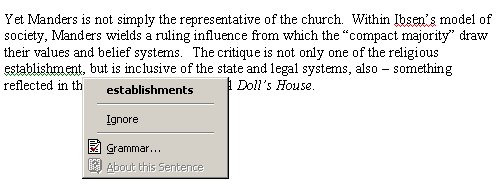Political Correctness check
01 May 2005You’ve probably heard of spell- and grammar-checking, but this one is new to me!

Ah, Microsoft is trying to pluralise the establishment! Take that, monopoly conspiracy theorists! ;)
I’ve delivered simple, clear and easy-to-use services for 20 years, for startups, scaleups and government. I write about the nerdy bits here.
— @joahua
You’ve probably heard of spell- and grammar-checking, but this one is new to me!

Ah, Microsoft is trying to pluralise the establishment! Take that, monopoly conspiracy theorists! ;)
This one should probably even be readable! Seriously, it’s been cleaned up a lot… if the last one was too much, this should be easier to read… and hopefully less dependent upon the original play it’s based on!
I also refuse to use version numbers for a composition, so I’m just going to say this:
I received another 4 letters yesterday from the same company as was responsible for the original posting on this matter. Of course, I’m transferring none of the four domains to that registrar, and they sent it by registered mail from the US.

Sucks to be them.
Anyone else received any? Or am I somehow special?
Tangential P.S.: Please please please read and comment on the post Recreant Strength. Please?
Kindly attack the previous post as much as you want. Vicious criticism is welcomed and requested, seeing as my chances of getting it from teachers are too slim; that’s not arrogance, that’s internal school policy which means they can’t comment on assessments.
Ridiculous.
In all seriousness, please take to it with a knife (or a pen/keyboard, whatever).
The first draft of a short story for part of an assessment task, that I share in an attempt at publishing non-geek content a little more often here. Or something!
Recreant Strength is only available in PDF form at the present time, because it’d take too long to markup properly, and I’m not going to trust either Microsoft Word nor OpenOffice to export to HTML cleanly. Because it won’t.
Damn it, I think I just went and ruined a non-geeky post… sorry!